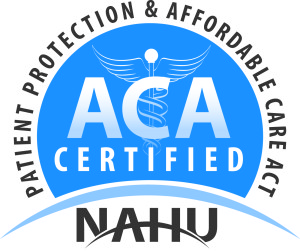HOME OWNER’S INSURANCE BASICS
What is homeowner’s insurance?
Homeowner’s insurance provides financial protection against disasters. A standard policy insures the home itself and the things you keep in it.
Homeowner’s insurance is a package policy. This means that it covers both damage to your property and your liability or legal responsibility for any injuries and property damage you or members of your family cause to other people. This includes damage caused by household pets.
Damage caused by most disasters is covered but there are exceptions. The most significant are damage caused by floods, earthquakes and poor maintenance. You must buy two separate policies for flood and earthquake coverage. Maintenance-related problems are the homeowner’s’ responsibility.
WHAT IS IN A STANDARD HOMEOWNER’S INSURANCE POLICY?
A standard homeowner’s insurance policy includes four essential types of coverage. They include:
- Coverage for the structure of your home.
- Coverage for your personal belongings.
- Liability protection.
- Additional living expenses in the event you are temporarily unable to live in your home because of a fire or other insured disaster.
1. The structure of your house
This part of your policy pays to repair or rebuild your home if it is damaged or destroyed by fire, hurricane, hail, lightning or other disaster listed in your policy. It will not pay for damage caused by a flood, earthquake or routine wear and tear. When purchasing coverage for the structure of your home, it is important to buy enough to rebuild your home.
Most standard policies also cover structures that are detached from your home such as a garage, tool shed or gazebo. Generally, these structures are covered for about 10% of the amount of insurance you have on the structure of your home. If you need more coverage, talk to your insurance agent about purchasing more insurance.
2. Your personal belongings
Your furniture, clothes, sports equipment and other personal items are covered if they are stolen or destroyed by fire, hurricane or other insured disaster. Most companies provide coverage for 50% to 70% of the amount of insurance you have on the structure of your home. So if you have $100,000 worth of insurance on the structure of your home, you would have between $50,000 to $70,000 worth of coverage for your belongings. The best way to determine if this is enough coverage is to conduct a home inventory.
This part of your policy includes off-premises coverage. This means that your belongings are covered anywhere in the world, unless you have decided against off-premises coverage. Some companies limit the amount to 10% of the amount of insurance you have for your possessions. You have up to $500 of coverage for unauthorized use of your credit cards.
Expensive items like jewelry, furs and silverware are covered, but there are usually dollar limits if they are stolen. Generally, you are covered for between $1,000 to $2,000 for all of your jewelry and furs. To insure these items to their full value, purchase a special personal property endorsement or floater and insure the item for its appraised value. Coverage includes “accidental disappearance,” meaning coverage if you simply lose that item. And there is no deductible.
Trees, plants and shrubs are also covered under standard homeowner’s insurance. Generally you are covered for 5% of the insurance on the house—up to about $500 per item. Perils covered are theft, fire, lightning, explosion, vandalism, riot and even falling aircraft. They are not covered for damage by wind or disease.
3. Liability protection
Liability covers you against lawsuits for bodily injury or property damage that you or family members cause to other people. It also pays for damage caused by your pets. So, if your son, daughter or dog accidentally ruins your neighbor’s expensive rug, you are covered. However, if they destroy your rug, you are not covered.
The liability portion of your policy pays for both the cost of defending you in court and any court awards—up to the limit of your policy. You are also covered not just in your home, but anywhere in the world.
Liability limits generally start at about $100,000. However, experts recommend that you purchase at least $300,000 worth of protection. Some people feel more comfortable with even more coverage. You can purchase an umbrella or excess liability policy which provides broader coverage, including claims against you for libel and slander, as well as higher liability limits. Generally, umbrella policies cost between $200 to $350 for $1 million of additional liability protection.
Your policy also provides no-fault medical coverage. In the event a friend or neighbor is injured in your home, he or she can simply submit medical bills to your insurance company. This way, expenses are paid without a liability claim being filed against you. You can generally get $1,000 to $5,000 worth of this coverage. It does not, however, pay the medical bills for your family or your pet.
4. Additional living expenses
This pays the additional costs of living away from home if you can’t live there due to damage from a fire, storm or other insured disaster. It covers hotel bills, restaurant meals and other living expenses incurred while your home is being rebuilt. Coverage for additional living expenses differs from company to company. Many policies provide coverage for about 20% of the insurance on your house. You can increase this coverage, however, for an additional premium. Some companies sell a policy that provides an unlimited amount of loss-of-use coverage, but for a limited amount of time.
If you rent out part of your house, this coverage also reimburses you for the rent that you would have collected from your tenant if your home had not been destroyed.
ARE THERE DIFFERENT TYPES OF POLICIES?
Yes. A person who owns his or her home would have a different policy from someone who rents. Policies also differ on the amount of insurance coverage provided.
The different types of homeowner’s policies are fairly standard throughout the country. However, individual states and companies may offer policies that are slightly different or go by other names such as “standard” or “deluxe”. The one exception is the state of Texas, where policies vary somewhat from policies in other states. The Texas Insurance Department has detailed information on its various homeowner’s policies.
The chart below lists the disasters covered in each of the following types of policies:
If you own your home
If you own the home you live in, you have several policies to choose from. The most popular policy is the HO-3, which provides the broadest coverage. Owners of multi-family homes generally purchase an HO-3 with an endorsement to cover the risks associated with having renter’s live in their homes.
HO-1: Limited coverage policy
This “bare bones” policy covers you against the first 10 disasters. It’s no longer available in most states.
HO-2: Basic policy
A basic policy provides protection against all 16 disasters. There is a version of HO-2 designed for mobile homes.
HO-3: The most popular policy
This “special” policy protects your home from all perils except those specifically excluded.
HO-8: Older home
Designed for older homes, this policy usually reimburses you for damage on an actual cash value basis which means replacement cost less depreciation. Full replacement cost policies may not be available for some older homes.
If you rent your home
HO4-Renter
Created specifically for those who rent the home they live in, this policy protects your possessions and any parts of the apartment that you own, such as new kitchen cabinets you install, against all 16 disasters.
If you own a co-op or a condo
H0-6: condo/co-op
A policy for those who own a condo or co-op, it provides coverage for your belongings and the structural parts of the building that you own. It protects you against all 16 disasters.
Your level of coverage
Regardless of whether you are an owner or renter, you have the following three options:
1. Actual cash value.
This type of policy pays to replace your home or possessions minus a deduction for depreciation.
2. Replacement cost.
The policy pays the cost of rebuilding/repairing your home or replacing your possessions without a deduction for depreciation.
3. Guaranteed or extended replacement cost.
This policy offers the highest level of protection. A guaranteed replacement cost policy pays whatever it costs to rebuild your home as it was before the fire or other disaster–even if it exceeds the policy limit. This gives you protection against sudden increases in construction costs due to a shortage of building materials after a widespread disaster or other unexpected situations. It generally won’t cover the cost of upgrading the house to comply with current building codes. You can, however, get an endorsement (or an addition to) your policy called Ordinance or Law to help pay for these additional costs. A guaranteed replacement cost policy may not be available if you own an older home.
Some insurance companies offer an extended, rather than a guaranteed replacement cost policy. An extended policy pays a certain percentage over the limit to rebuild your home. Generally, it is 20 to 25 percent more than the limit of the policy. For example, if you took out a policy for $100,000, you could get up to an extra $20,000 or $25,000 of coverage.
Even though a guaranteed/extended replacement cost policy may be a bit more expensive, it offers the best financial protection against disasters for your home. These coverages, however, may not be available in all states or from all companies.
Disclaimer
Data and information is provided for informational purposes only, and is not intended for any other commercial or non-commercial purposes. Neither David M. Kulawiak, Inc. nor any of its data or content providers shall be liable for any errors or delays in the content, or for any actions taken in reliance thereon. By accessing our web site, a user agrees not to redistribute the information found therein. We provide customized links to select companies for your convenience only. We do not endorse or recommend the services of any company. The company you select is solely responsible for its services to you, the user. We shall not be liable for any damages or costs of any type arising out of or in any way connected with your use of our services.





